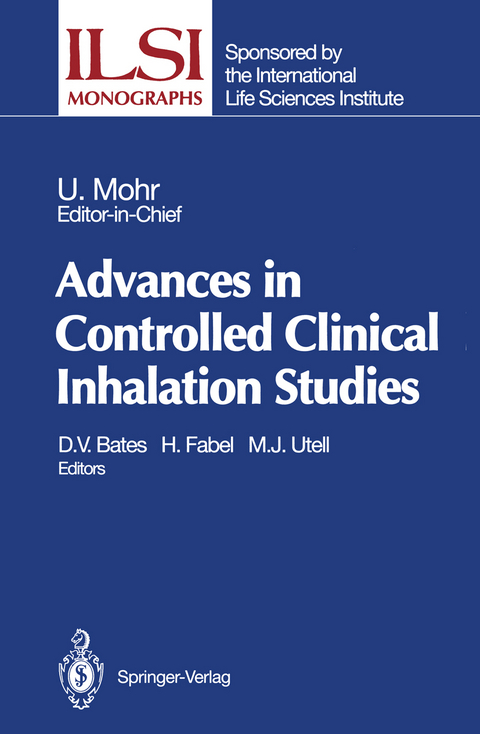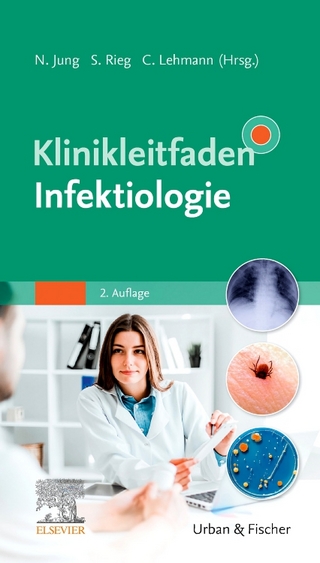
Advances in Controlled Clinical Inhalation Studies
Springer Berlin (Verlag)
978-3-642-77178-1 (ISBN)
The book summarizes topical knowledge about inhalation studies using controlled clinical facilities. Methodologic problems, ethical questions, new experimental approaches are addressed as well as administrative demands and risk assessment Methods applied in the classical field of inhalation toxicology - human and animal studies - are presented. Immunological or very new in vitro methods are also considered. As a monograph - and congress proceedings volume - the book contains contributions from about 20 leading scientists in the field of inhalation toxicology and particularly in clinical inhalation.
I. Symposium Presentation.- The Emergence of Controlled Human Exposure Studies.- Section 1. The Outdoor Environment in Europe.- Trend of Air Quality in North Rhine-Westphalia (Rhine-Ruhr Area) During the Past 20 Years.- Air Pollution in the Former German Democratic Republic: Consequences for Health Control.- The Outdoor Environment in North America.- Exposure to Oxidant Gases and Acidic Particles in the United States.- Section 2. Indoor Air: Home and Workplace.- Investigation of Indoor Air Pollution Sources in Climate Chambers: Emissions from Textile Floor Coverings.- Dust Measurements at Workplaces: State of the Art and Future Demands.- Health Effects of Indoor Air Exposures.- Inhalation Studies in Investigation of the Sick Building Syndrome.- Section 3. Assessing Personal Exposure.- Personal Exposure Assessment: Implications for Clinical Studies of Inhaled Pollutants.- Regional Deposition of Inhaled Particles in the Human Respiratory Tract.- Calculation of Acid Aerosol Dose.- Section 4. Clinical Inhalation Methodology.- Generation of Complex Aerosols.- Assessment of Ambient Exposures and Their Effects on Health in Chambers.- Susceptible Populations: Lessons from Controlled Exposure Studies of Inhaled Pollutants.- Inhalation of Pollutants and Pollutant Mixtures in Subjects with Bronchial Hyperresponsiveness.- Section 5. New Methodologies.- Controlled Clinical Inhalation Studies with Environmental Air Pollutants at Concentrations Commonly Found in the Ambient Air.- Time- and Dose-Dependent Cellular and Biochemical Changes in Response to Ozone Exposure.- Regeneration, Differentiation, and Neoplastic Transformation of Type II Alveolar Epithelial Cells.- Infectivity Models in Clinical Inhalation Studies.- Does the Pulmonary Surfactant System Yield Meaningful Parameters inInhalation Toxicity Studies? A Review.- New Approaches to Evaluating the Pulmonary Effects of Controlled Inhalation Exposures in Human Volunteers.- Section 6. Clinical Data and Regulatory Decisions.- Meta-analysis and "Effective Dose" Revisited.- Regulating Indoor Air.- Perspective on the Regulator's Need for Future Clinical Studies.- II. Poster Presentations.- Use of Questionnaires for Assessment of Exposure to Airborne Pollutants.- Disorders in the Olfactory Function and Injury of the Upper Airways of Exposed Workers in Copper-Producing Works.- Elevated Bioaerosols in Manufactured/Conventional Homes.- Single-Breath Bolus Exposure for Noninvasive Determination of Ozone Dose Distribution.- Problems of Regulating Outdoor Ozone Levels.- Inhalation Studies with Airborne Particulates in Rodents: Cytotoxic and Genotoxic Effects on Alveolar Macrophages and Bone Marrow Cells.- Assessment of Pollutant-Induced Impairment of the Pulmonary Surfactant System by High-Performance Liquid Chromatography.- Assessment of 2,4-Dichlorophenoxyacetic Acid Exposure in the Chemical Industry by Biological Monitoring.- Assessment by Aerosol Recovery Technique of Site of Airway Constriction During Intravenous Histamine Challenge.- Attempted Selective Deposition of Aerosols Using Differently Sized Particles in Man.- Acute Effects of Ambient Ozone in Physically Active Adults.- Respiratory Injuries in Workers from the Coke Chemical Industry.- Aerosol-Derived Airway Dimensions of Dog Lungs: Comparison of Bolus and Single-Breath Techniques.- Nonoccupational Exposure to Benzene.- Comparative Investigation of Genotoxic and Nongenotoxic Mechanisms and Their Relevance in Carcinogenesis Induced by Airborne Particulates and Automobile Exhaust Particulates.- Gestational Inhalation of Indoor AirPollution Alters Neonatal Reflex Development and Fetal Hematology.- Aerosol Deposition Pattern of Technetium-99m-Labeled Fenoterol After Inhalation from Three Devices in Healthy Volunteers.- Comparison of Bronchospasmolytic Effects of 200 ?g Fenoterol After Inhalation with Respimat and Metered Dose Inhaler.
| Erscheint lt. Verlag | 21.12.2011 |
|---|---|
| Reihe/Serie | ILSI Monographs |
| Mitarbeit |
Stellvertretende Herausgeber: D.V. Bates, H. Fabel, M.J. Utell Chef-Herausgeber: Ulrich Mohr |
| Zusatzinfo | XII, 430 p. |
| Verlagsort | Berlin |
| Sprache | englisch |
| Maße | 155 x 235 mm |
| Gewicht | 673 g |
| Themenwelt | Medizin / Pharmazie ► Medizinische Fachgebiete ► Arbeits- / Sozial- / Umweltmedizin |
| Medizin / Pharmazie ► Medizinische Fachgebiete ► Pharmakologie / Pharmakotherapie | |
| Medizin / Pharmazie ► Pharmazie | |
| Studium ► Querschnittsbereiche ► Infektiologie / Immunologie | |
| Schlagworte | Chromatography • Clinical Inhalation • clinical trial • Controlled Clinical Studies • Histamin • Indoor Air Pollution • Innenraumluftbelastung • Klinische Inhalation • Kontrollierte klinische Studien • Macrophages • Research • Risikogruppen • Risk groups • Toxicity |
| ISBN-10 | 3-642-77178-5 / 3642771785 |
| ISBN-13 | 978-3-642-77178-1 / 9783642771781 |
| Zustand | Neuware |
| Informationen gemäß Produktsicherheitsverordnung (GPSR) | |
| Haben Sie eine Frage zum Produkt? |
aus dem Bereich


